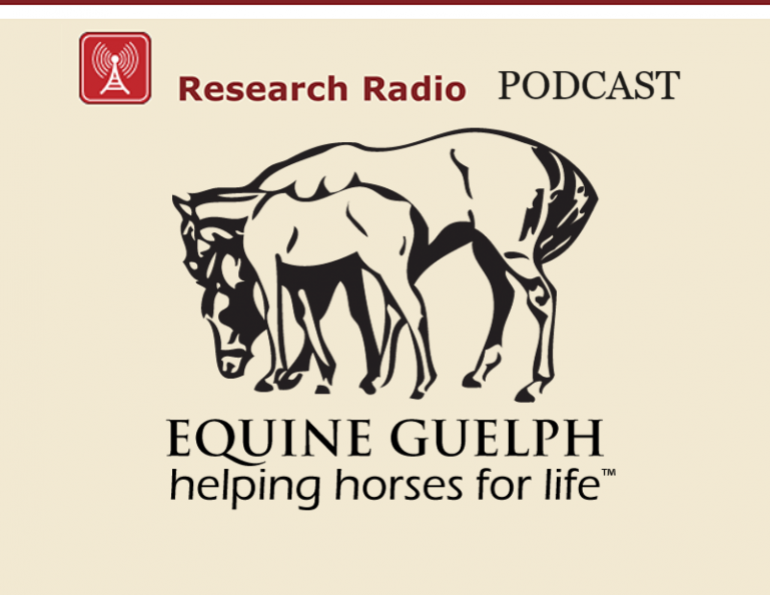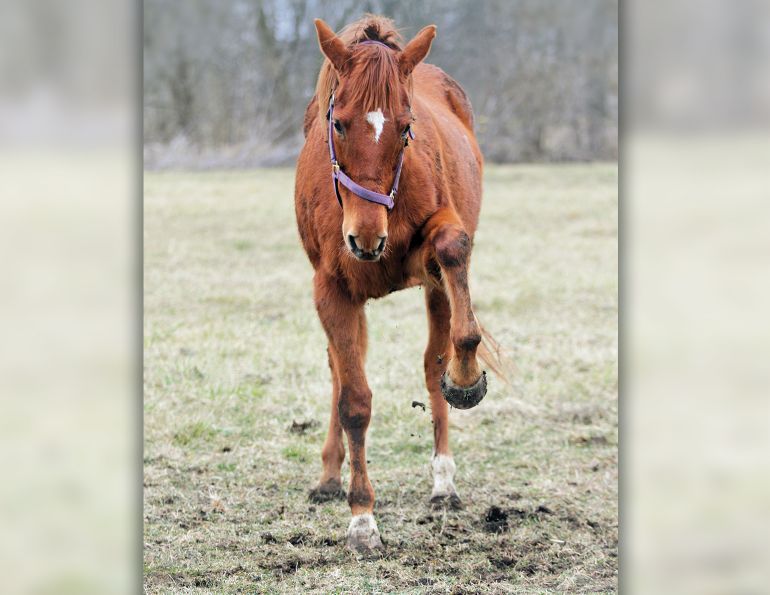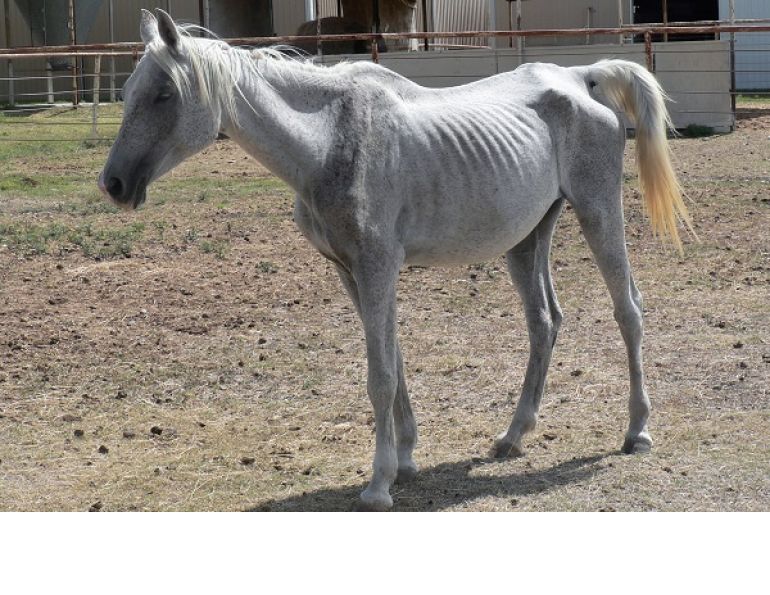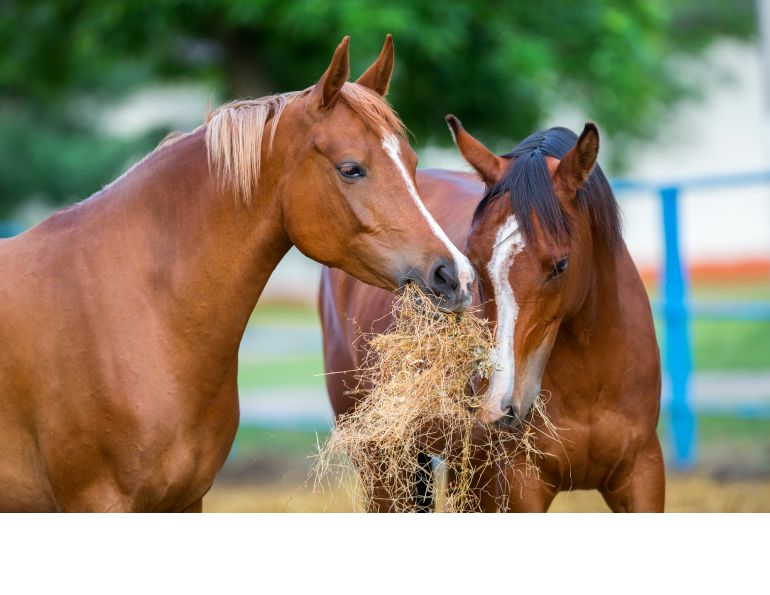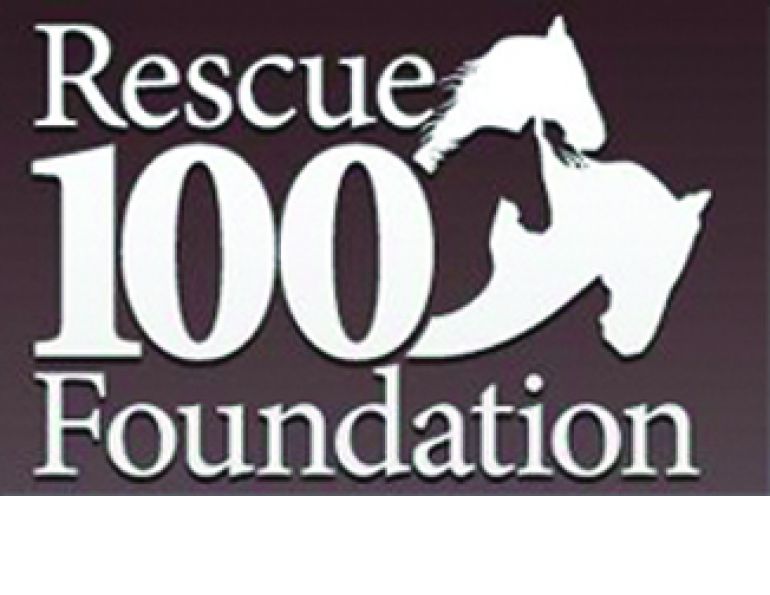By Kentucky Equine Research
Horses, like humans, come in a variety of body shapes. Some breeds and individuals tend to be ”easy keepers,” naturally assuming a well-rounded shape. Others always seem to look a bit thin and ribby, no matter how they are managed.
Why can't some horses seem to gain and hold their weight? There is often more than one reason.
The following is a list of factors that can affect equine weight, and help you make changes to bring your skinny horse into better condition.
1. Parasites. A horse with a heavy worm burden may show weight loss along with a swollen belly and a dull, rough coat. A selection of easily administered deworming products is available at tack and feed stores. The newest dewormers include an ingredient to eliminate tapeworms, parasites responsible for recurrent colic as well as failure to gain weight.
2. Dental Condition. Because normal jaw structure does not allow a horse’s teeth to meet squarely, sharp edges must routinely be smoothed off, a process known as ”floating“ the teeth. A veterinarian can perform this maintenance once or twice a year, checking for missing, broken, or poorly aligned teeth in the process. Horses whose teeth have been neglected may lose condition because they can’t chew hay and grain efficiently. A thorough dental check-up and appropriate correction may lead to significant weight gain.
3. Gastric Ulcers. This problem is most common among horses in training or on a heavy performance schedule, but almost any horse can be at risk. Ulcers can cause enough abdominal discomfort to back horses off their feed. Treatment with omeprazole is usually effective in healing ulcers, and a daily antacid can help keep ulcers from recurring.
|
|
4. Pain. Constant discomfort, even at a low level, can dull a horse’s appetite. Dealing with pain from arthritis, laminitis, and other conditions uses energy a thin horse may not be able to spare. A veterinarian can advise on the best way to manage chronic pain.
5. Social status. Stress from herd dynamics is a significant factor in a horse’s well-being. At one end of the scale, a lone horse, one that has recently lost a favourite companion, or one that is stalled away from other horses may be under stress and therefore have a depressed appetite. Getting a stable mate (horse, pony, goat, or llama) for a single horse, or at least pasturing him in sight of other horses, may be helpful. On the other hand, a horse that is dominated by pasture mates is often afraid to approach water tanks, piles of hay, and closely spaced grain feeders if other horses are around. Feeding old, sick, or weak horses separately may give these low-status animals an opportunity to eat more in a relaxed and safe setting.
6. Age. Older horses lose a measure of their ability to digest and metabolize feedstuffs as efficiently as their younger counterparts. They many need better quality hay, increased amounts of grain, and higher protein levels to maintain adequate body condition.
7. Illness. Horses recovering from sickness or injury may have lost fat and muscle throughout the course of their medical treatment. An abundance of grazing time and more frequent grain meals can help them gain weight as they return to health.
8. Behaviour. A horse doesn’t need to be in race training to be working very hard. Cribbing, running a fence line, or constantly weaving or circling in a stall, are all behaviours that use energy and take time away from eating. A change in management can often lead to weight gain, even without the consumption of more food.
If an owner has considered health and management factors and has made adjustments, but is still looking at a skinny horse, other measures need to be considered. A thin horse may simply not be taking in enough calories to support his level of energy expenditure. Remember that work includes not only training or riding, but also growth, breeding, gestation, and lactation.
|
|
9. Forage. Increasing energy intake should begin with a forage upgrade. If possible, more grazing time on high quality pasture is a logical place to start. Replacing grass hay with a legume or mixed hay that offers abundant leaves and few stems is also helpful.
10. Concentrate. Adding fat is an easy way to boost calories in the horse’s concentrated ration. Ounce for ounce, fat provides far more energy than grain. Switching to a high fat feed or replacing part of the grain measure with a cup or two of vegetable oil will significantly increase energy intake. For whatever reason, perhaps due to taste, smell, or texture, some horses don't readily consume oil; fortunately there are other ways to add fat.
11. Rice bran. One of the easiest and most palatable ways to introduce extra fat is by adding up to two pounds of rice bran to the grain ration. Rice bran products can safely be fed to a wide range of horses, and feeding rice bran does not overload the digestive system with carbohydrates.
12. Beet pulp. Offered either as a top dressing or as a component of prepared feed, beet pulp is readily accepted by most horses. It contains highly digestible fibre and offers a caloric content similar to oats. A feed with a fat content of 8 to 12 percent and a beet pulp portion of 15 to 20 percent is a good choice to encourage weight gain.
13. Digestive aids. Probiotics are made up of yeast and beneficial bacteria, micro-organisms that are found naturally in the intestinal tract. Administered as an oral paste, probiotic preparations facilitate digestion, helping the horse get all the nutrients and energy out of every feeding.
14. Easy does it! If the concentrate portion of a horse’s diet totals more than five pounds, break the feedings into several smaller meals offered two or more times a day. Make all feeding changes gradually over seven to ten days, adding a little more of the new feed or hay to the old ration with each meal. This practice allows the microflora in the digestive tract to adjust to the altered diet, minimizing the chance of colic. A slow introduction to the new tastes and textures also encourages the horse to keep eating, as an abrupt change may cause him to reject the strange stuff in his feed bin.
Finally, there are some things an owner can’t change, such as breed, conformation, and temperament. Horses that are tall and rangy (Thoroughbreds often fall into this category) may always look a little thin, even with the best nutrition. Animals with a naturally nervous temperament also seem to burn more energy than they can safely consume. Owners of these “hard keepers” should try the outlined management steps, and may want to perform a ration analysis to be sure the diet provides sufficient protein, vitamins, and minerals for good health.
This article appeared in the November/December 2011 issue of Canadian Horse Journal - Central & Atlantic Edition.



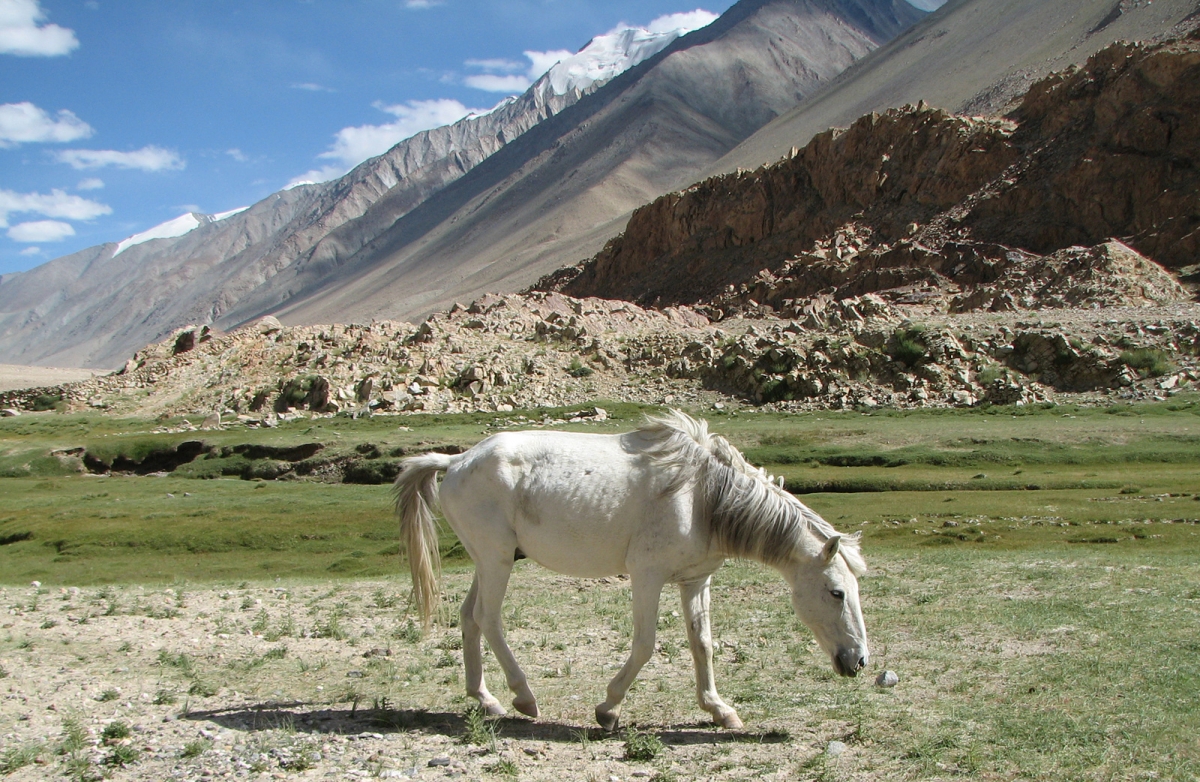 A variety of factors can contribute to weight loss, including age, breed, conformation, illness, dental condition, and a heavy worm load which is characterised by a swollen belly and a dull, rough coat.
A variety of factors can contribute to weight loss, including age, breed, conformation, illness, dental condition, and a heavy worm load which is characterised by a swollen belly and a dull, rough coat. Stress from herd dynamics can play a role in weight loss. Old, sick, or weak horses should be fed separately so they don’t have to compete with dominate pasture mates for food and water.
Stress from herd dynamics can play a role in weight loss. Old, sick, or weak horses should be fed separately so they don’t have to compete with dominate pasture mates for food and water.


